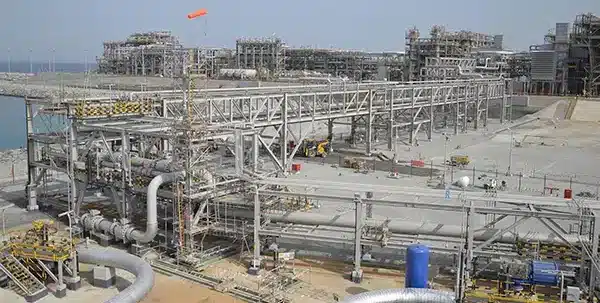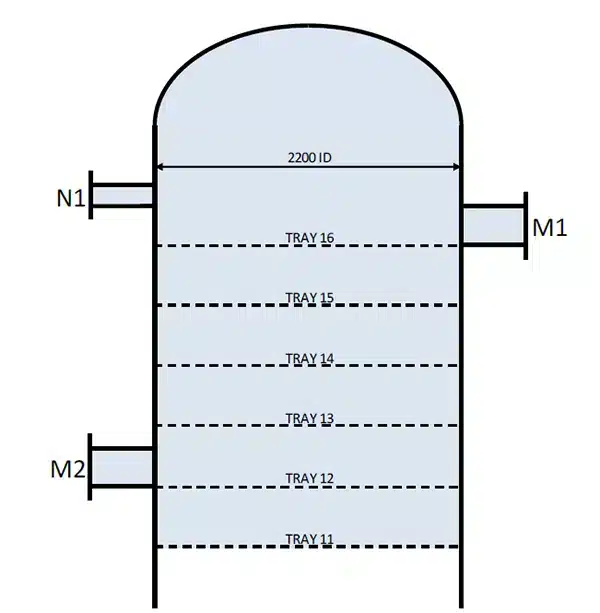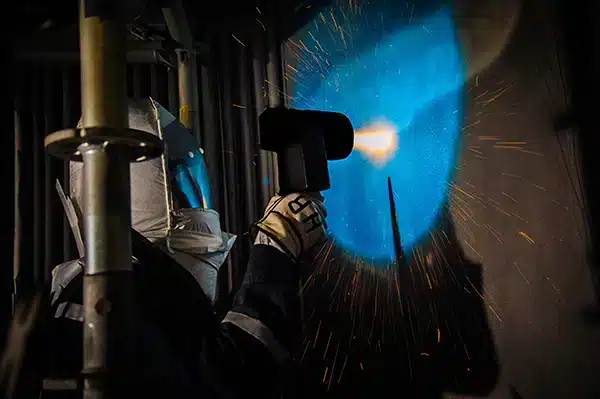SS Chloride Stress Corrosion Cracking in Critical Process Assets
Chloride induced Stress Corrosion Cracking (CSCC) poses a significant challenge for industries operating in high chloride environments, especially in offshore installations fabricated or clad with stainless steel.
In 2013, IGS was contracted to combat CSCC in six critical process vessels offshore in the Arabian Sea operated by an LNG Corporation: 4 discharge drums, and 2 condensate strippers.
Case Study Overview
High Velocity Thermal Spray (HVTS®) cladding was the effective solution deployed in these vessels to arrest CSCC and stop further metal degradation, eliminating the risk to asset integrity and ensuring process safety.
This case study explains the HVTS® cladding application, and the subsequent inspections over the years, confirming its enduring engineering performance.

The Challenge of Chloride Stress Corrosion Cracking
Chloride induced Stress Corrosion Cracking (CSCC) poses a significant threat to the structural integrity of critical process vessels and hence the process safety of the plant.
This form of corrosion cracking can be challenging to effectively monitor with inspection and once initiated can lead to catastrophic failures if not addressed effectively.

Why CSCC Occurs in SS
This phenomenon occurs due to a combination of three key factors: the presence of chlorides in the process fluids, tensile stress in the substrate material, and elevated operational temperatures. When these three factors combine, they create a
corrosive environment that initiates micro-cracks or micro-pits in the stainless-steel surface. These cracks become the focal points for localized corrosion and can propagate rapidly under the influence of the applied tensile stresses, particularly in Heat Affected Zones or areas of higher material hardness. Austenitic stainless steels, which are commonly used in process vessels due to their excellent corrosion resistance and mechanical properties, are particularly susceptible to CSCC.
How to Mitigate CSCC in SS Clad Process Vessels
To mitigate CSCC in process vessels, various protective measures are employed, including the use of high-performance
systems like HVTS® cladding. This engineered solution delivers an effective corrosion barrier against chloride penetration, isolating the asset substrate from the chlorides in the process fluid, thus preserving the integrity and safety of critical process vessels in high chloride environments.
Delivering HVTS® Cladding in 2013
In 2013, the LNG Corporation embraced engineering innovation and deployed HVTS® as an advanced solution to mitigate CSCC in the six critical process vessels in-situ, on the offshore facility during their planned turnaround.
HVTS® cladding employs a supersonic thermal spray process to apply a dense, corrosion-resistant high nobility alloy cladding, with an extremely high mechanical bond onto the substrate.
This engineering breakthrough acts as an impermeable barrier against the process corrosive agents, offering robust, long-term protection to the underlying metal substrate, protecting the asset integrity.

Inspection in 2016
Three years after the HVTS® cladding application, all six vessels underwent meticulous internal inspections to assess the cladding’s condition and identify any maintenance requirements.
The cladding’s performance demonstrated its engineering robustness in protecting the substrate from CSCC and the high-quality field application standards employed by IGS.
All the applied IGS HVTS® cladding was found to be in its original condition, devoid of any cracks, blistering, or delamination.
Download a PDF version of this case study
Free consultation with an IGS Subject Matter Expert
IGS is here to provide information, answer questions and create an effective solution for your needs.
